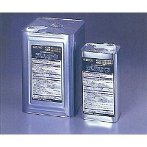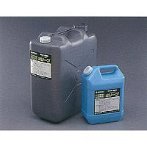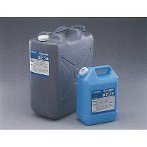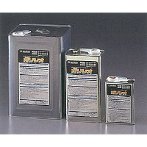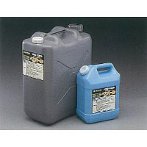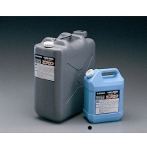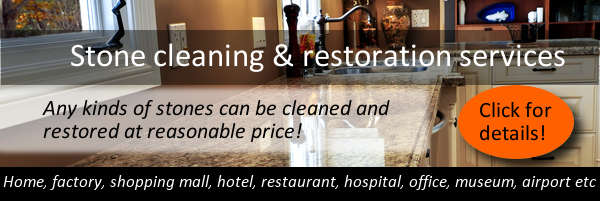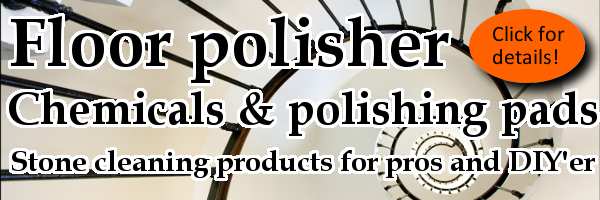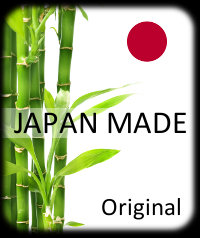Stone sealer and detergent, oil and stain rust remover

Purpose of using sealer and coating agents on stones
The idea of using sealers on stone surface is to prevent water from penetrating the porous structure of the stone, which eventually leads to stains, cracks, weathering, and deterioration. There are largely two types of chemical agents for stone cleaning.
- 1. To prevent stains, rust, deterioration
- 2. To remove stains, rust, and other unwanted phenomena
Some chemical agents can fulfill both purposes, but mainly, these two types are used in the most appropriate situations.




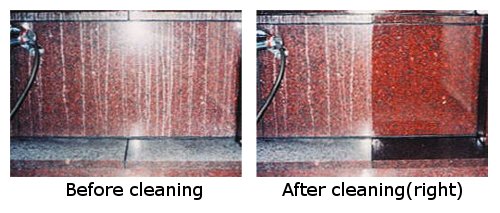

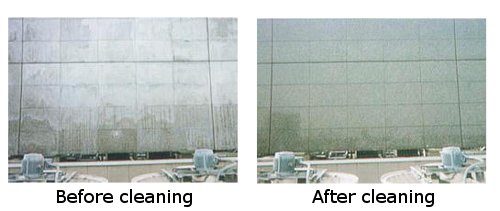
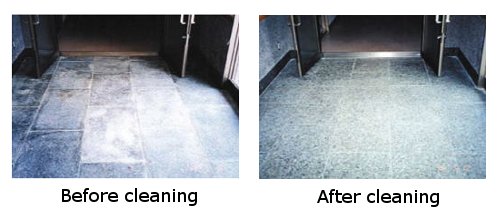

What makes deterioration of stone?
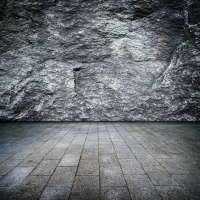
Regardless of how polished it is, the structure of natural stone surface is porous with many invisible tiny holes. Therefore, penetration of water or moist is the main reason for deterioration. The one reason to conduct stone sealing is this.
The phenomena of efflorescence and weathering also stem from water. Therefore, it can be said that for protecting stone, it is most important to protect the stone surface from water. Sealants have been developed for this purpose and stone sealing become popular method to protect the stone surface.
Two types of stone sealing for floor

For stone sealing liquid, the following two methods are used: (1) "coating," which makes a transparent layer on the stone surface, and (2) "penetrating," which passes through the stone porous structure.

By using penetrating type of stone sealing liquid, the absorption rate of water will dramatically decrease. We offer various types of stone sealers with different characteristics such as water repellent, oil repellent, anti-weatherability, acid resistivity, and so on.
What is more important about stone sealer is the color. If you use these types of stone sealants and the color of the stone changes drastically, the design will be spoiled. Sealers have to be transparent and should not affect the color.
Stone stain removal | get rid of rust and stains on stones

Majority of the removers are used for removing rust and stains. Additionally, there are products that can be applied to efflorescence, water scale, decoloration, oil, silicone, and coking.
Although it is important to prevent stains, depending on the situation, this cannot be avoided. In such cases, stain removers help remove all types of unwanted taint and contamination.
These stain or rust removers are powerful but have to be selected according to the type of taint you wish to remove. Some look similar but have different compositions depending on the products.
Classification of stone stains
- Stains that penetrate the surface
- Beer, coffee, juice, sauce, liquid stains
- Wood, packing case, line stains
- Oil stains
- Fungus and moss stains
- Rust
- Water stains
- Discolored granite (darkening)
- Tough water stains
- Stains that adhere to the surface like a layer
- Paint and varnish (lacquer, acrylic, urethan)
- Stains that emerge from the inside or opposite side of stones
- Rust stem from iron originally contained in the stone
- Rust stem from steel-frame inside the stone
- Siphon off the scum from the bottom part of root
- Oil from implant door hinge
- Stain from adhesion bond
- Stain from joint bulking agent including oil
- Efflorescence
- The one that occurs from the joint of concrete
- Water scale
- Degregation of gloss
- Wearing off by walkthrough
- Deterioration by acid materials
- Degregation of color
- decolorization of stone color
- Freezing damage
- Damage occur by freezing water remain inside the stone


